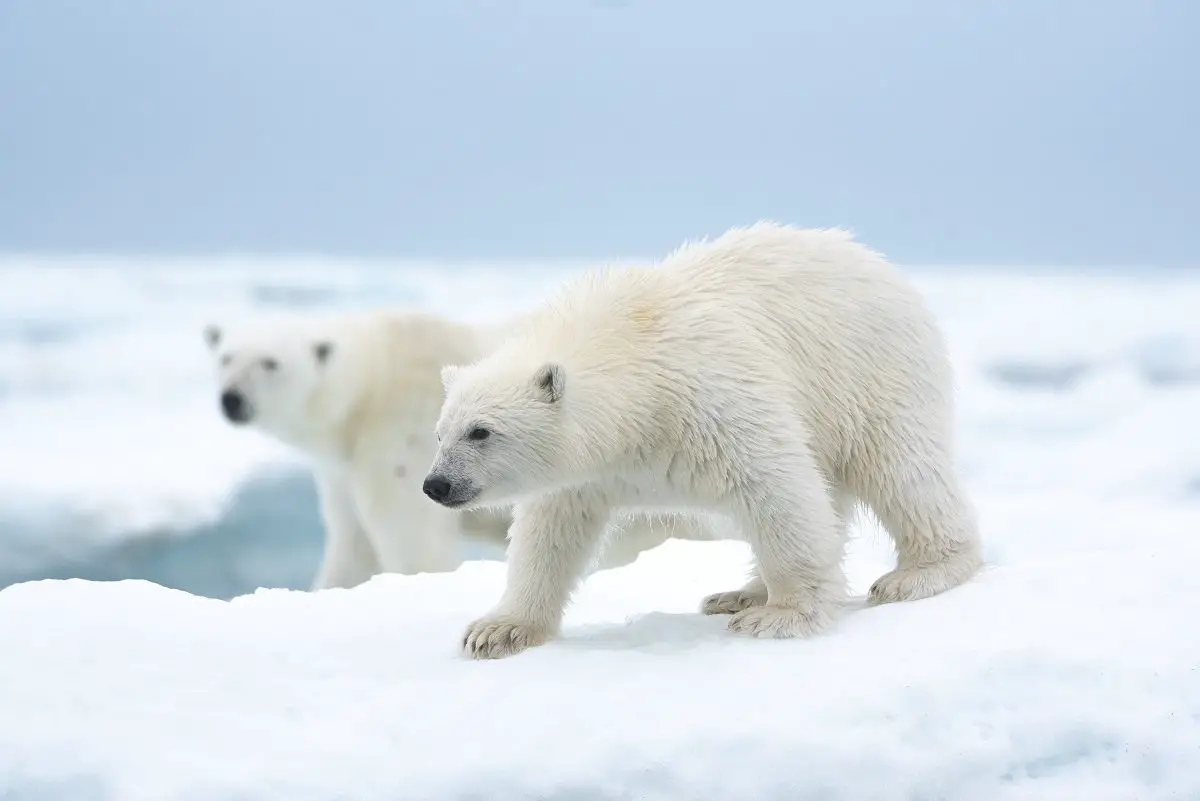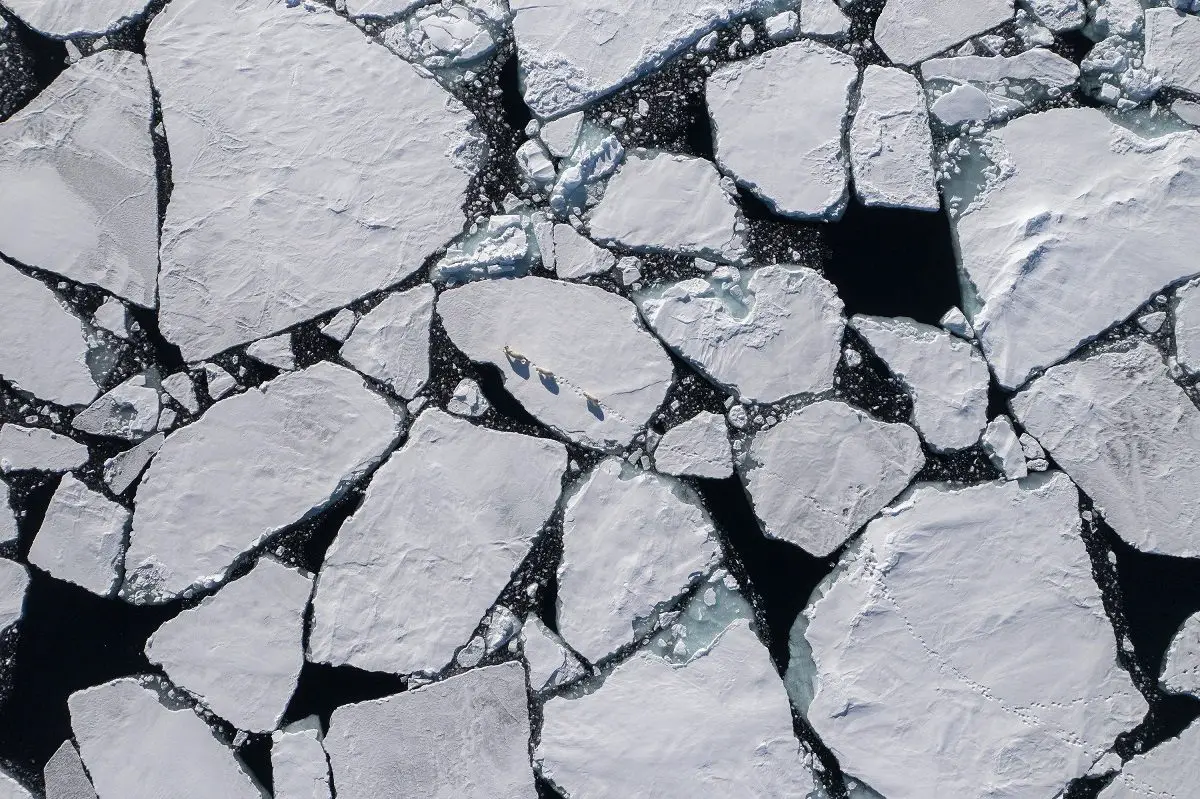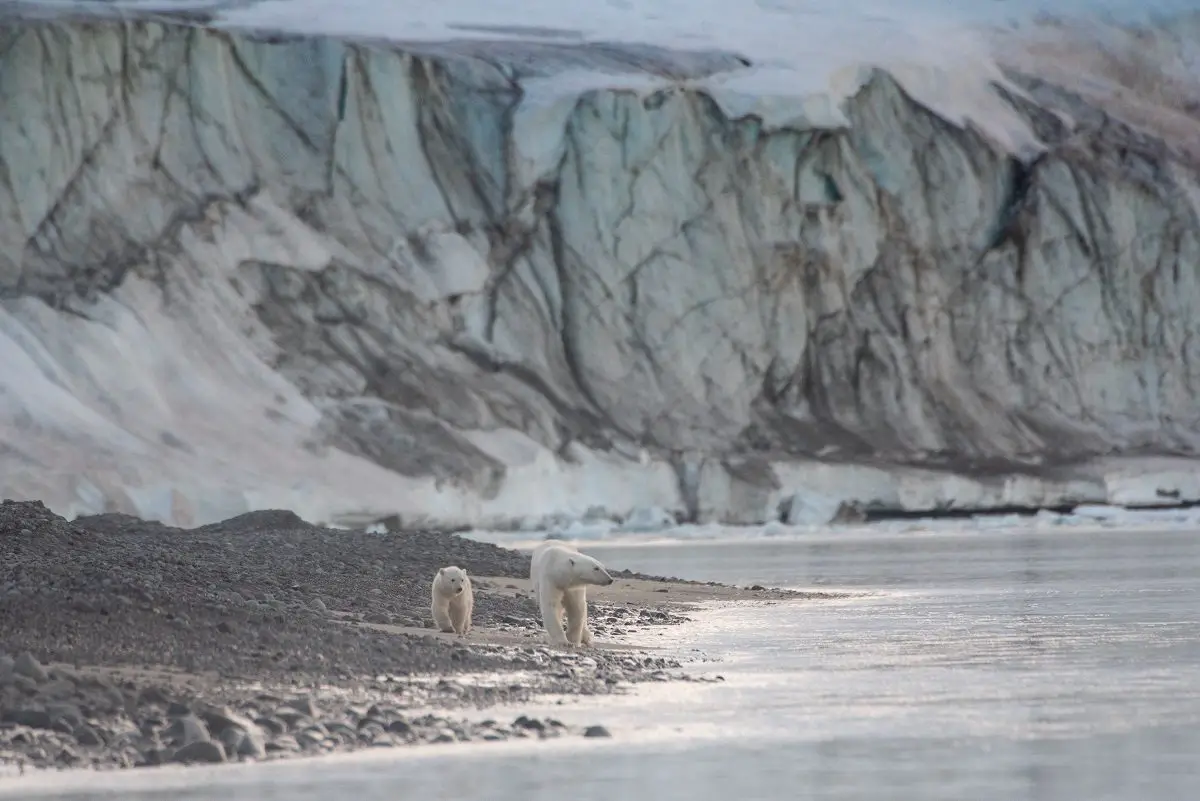Polar bears—ice bears, as they are sometimes called—need ice to survive. Disneynature’s newest entry into its impressive canon of anthropomorphized nature films, Polar Bear makes clear this very point. As climate change continues and the Earth’s ice coverage diminishes, polar bears’ lives are today more vulnerable than ever. Catherine Keener narrates a young female polar bear’s challenges as she matures into an increasingly challenging world, and as is so often the case with Disneynature’s films, the result is a charming, courageous tale of adaptation and resilience.
Directors Alastair Fothergill and Jeff Wilson provide some of the most jaw-dropping, eye-popping cinematography of polar bears in their habitat ever brought to the screen. But let’s acknowledge the degree of difficulty first. The destination—the archipelago between Norway and the North Pole—presents the challenges of glaciers, frozen tundra, mountains, and fjords. Filming has to take place during the harsh winter and early spring, when the seas freeze over and polar bears begin their hunts. Aside from the cold, there is the dark of the northern lights winter. The filmmakers might have a plan and even a basic script, but their subjects roam as they wish.

To capture footage of mothers and cubs roaming and hunting requires the filmmakers to set up their own environmentally friendly, self-contained, and sled-mounted camp. The long lens—a staple of nature documentary—allows them to shoot from a safe distance while still charting intimate details. Advanced gyro-stabilizers allow for complex, elegant tracking shots. Lightweight, unobtrusive remote-controlled drone cameras add a more omniscient perspective for aerial shots. And of course, once the weather changes, so too must the means of following the bears, from track vehicles to boats as the ice thaws. Even then, there are the challenges of shooting a white animal against a white background of snow, ice, and sky!
Despite all those challenges, the shoot—which required over 200 days—resulted in some of the most remarkable images of polar bears in their natural habitat one can imagine. One sequence in particular must have had the crew in goosebumps. Two young polar bears, one male and one female, encounter each other on a large floe of ice and join each other for a joyful, balletic, even Chaplinesque play session. You might expect something like this out of one of Disney’s animated features; to see real bears in such a playful state is nothing short of ecstatic.
Other sequences as more sobering, especially those that show the deteriorating state of the area’s ice mass, and with it, the polar bears’ chances of survival. The more the ice melts, the more treacherous their journeys, the farther they must travel to hunt, risking drowning to find increasingly depleted seals to eat. (There’s nothing here quite so distressing as the death sequence of the walrus in the 2017 Netflix series Our Planet, though, so take some comfort in that: Polar Bear is perfectly child-appropriate with only the mildest intimations of danger.)

But what Disneynature films do so persuasively is to singularize the plight of the species, and here, like in their prior films, Polar Bear shines. The protagonist—a young female “ice bear,” as she calls herself—isn’t given an anglicized name, as is so often the case, but Keener’s measured intonations and relatively spare narration characterize the bear as thoughtful, courageous, and resilient. The story covers her life first as she hunts with her brother and mother, then as she eventually leaves them to forage for herself, and finally as she triumphs over adversity to become a mother herself.
In every Disneynature film, from Elephant, Penguins, and Dolphin Reef to Monkey Kingdom, Bears, Chimpanzee, African Cats, and now Polar Bear—all co-directed by Fothergill—first-person narration anthropomorphizes the individual creature, allowing the filmmakers to create memorable, resonant stories out of sequences of footage that is otherwise random. While Keener’s narration guides viewers through the chronology and geography of her polar bear’s experience, the film’s score, composed by Harry Gregson-Williams, conveys the film’s varied emotions—elation, sorrow, pride— with unique, individually orchestrated leitmotifs for each storyline.
Supporting environmentalist causes with their filmmaking has been a tenet of the Disney corporate philosophy since their first nature documentary film, the “Tru-Life Adventure” of Seal Island in 1948 and continuing today with the series of Disneynature films. The Disney Conservation Fund supports Polar Bears International in their efforts to help protect polar bear mothers, cubs and their Arctic home. Far from being the woke nemesis of right-wing governors, on this front Disney’s work is dedicated to education about, and protection of, the species.

That support, and the awareness films like Polar Bear promote, comes at a time when the Earth faces greater potential consequence of climate change than ever before. Arctic sea ice, according to NASA’s Global Ice Viewer is declining by some 13% each decade, and not only provides the polar bear population its livable habitat; it also reflects sunlight, keeping polar regions cool and moderating global climate. In other words, as goes the Arctic, so goes the world. Before his passing, physicist Stephen Hawking predicted humans have less than 200 years before our planet is uninhabitable. “Rising temperatures, reduction of the polar ice caps, deforestation, and decimation of animal species. We can be an ignorant, unthinking lot,” he had said.
Polar Bear is an incredibly beautiful, emotionally moving, and educationally instructive film. Its protagonist is capable and resilient, a young female striking out on her own and charting her own path to maturity. The broader questions the film raises, about the survival of the species and the planet, are far more sobering. But even those can’t temper the guileless charm and natural beauty of Disneynature’s latest triumph, Polar Bear.
Polar Bear premieres exclusively on the Disney+ streaming service on Earth Day, April 22, 2022, accompanied by the making-of featurette Bear Witness, narrated by Blair Underwood. For more information on polar bears and their changing habitat, visit polarbearsinternational.org.




When you say it is child-friendly and family appropriate, does that mean you don’t see any hunting occur? Do you only hear about it? I am very sensitive about animals, so seeing animals hurt or dying, even in the context of nature, is very distressing to me. It’s why I haven’t watched stuff like BBC Earth and Our Planet… nor any DisneyNature documentaries. Which sucks, because they all seem to look so beautiful. But my heart can’t take any distress the animals might go through.
So is it safe from that perspective? Or does it still have distressing imagery of hunting and food?
Alice, you might find some of its content distressing. There is imagery of feeding on a whale carcass and there is a walrus hunt. No violence per se, and the hunting sequences have no battle or feasting. I feel Polar Bear is as “tame” in these terms as they come, but I can’t guarantee you wouldn’t be impacted by it.